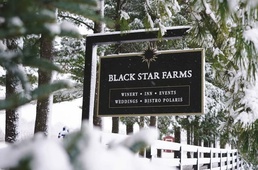Grading Our Schools
Money, scores drive inequities across district lines
Aug. 10, 2014

As parents are well aware, selecting a school district is hardly black and white.
Funding formulas and test scores – though widely available – are confusing even to the adminstrators that adhere to them.
Although the State of Michigan readily provides this information online, navigating it can be another story.
To help clarify, the Northern Express spoke with area districts about why test scores may not tell the whole story and how wealthy areas attract higher per-pupil funding.
FOLLOW THE MONEY
Most northern Michigan schools receive the minimum state funding: $7,251 per student. This is the case for TCAPS and for many surrounding area schools. However, some districts get more.
Harbor Springs School District students are allotted $8,287, while every other public school or charter school student in their county (Emmet) gets the minimum rate.
Northport Public Schools, for example, get $8,898 per pupil–the highest rate for schools in the Traverse Bay Area Intermediate School District. Yet, only 12 miles south and still within the TBAISD, Suttons Bay Public Schools get the minimum per pupil allotment.
Why do some schools get more dollars than others?
School districts get more money if their non-homestead taxable value is greater than the money they would otherwise receive from the state per-pupil allowances, said Stephanie Murray, an assistant superintendent at TBAISD.
In southeast Michigan, this formula favors wealthy suburbs. In northern Lower Michigan, it favors wealthy resort towns.
FRUSTRATING FORMULA
The inequity between schools frustrates northern Michigan school administrators.
"You really could look at that as a type of a civil rights question. It’s disturbing and it’s something that we need to address," said Jason Jeffrey, assistant superintendent at Traverse Bay Area Intermediate School District.
Still, even a district with odds stacked against it – minimum per pupil funding and a high poverty rate in the area – can succeed, Jeffrey said.
"We’ve had schools in Benzie County, we’ve had schools in Grand Traverse County – like Kingsley–that have done really well on these measures and they’ve been recognized as "˜reward’ schools by the State of Michigan," Jeffrey said.
Frankfort-Elberta Schools are a great example of schools scoring well despite their socioeconomic setting, he said.
"[They’re] approaching 70 percent of students qualifying for free and reduced lunch," he said. Here, Jeffrey credits school staff and the involvement of parents for the success in one of this county’s districts.
"That community is really involved," Jeffrey said. "Boy, people come [to meetings] and they’re interested and they’re supportive. I think that’s a common thread in communities where schools are performing at a level that’s a little bit higher."
The Michigan Department of Education has never studied whether better funding should equate with higher rankings/test scores, said Chris Janzer, assistant director of office of evaluation, strategic research and accountability at the Michigan Department of Education.
SCHOOLS ARE RANKED BY TEST SCORES
The state ranks every public school in Michigan, so it’s easy to see if one school rates higher than another – at least based on standardized test scores.
However, these rankings should be just one factor in selecting a school, cautions Janzer.
"[Parents] might [ask], "˜What about this district versus that district?’" Janzer said.
"We always say"¦ "˜test scores aren’t everything. They’re part of a larger package.’" As a local example, compare two Traverse City Area Public Schools: Courtade Elementary, ranked in the 82nd percentile for the 2012-13 school year, and Traverse Heights Elementary, ranked in the 10th percentile. Is the difference between the two schools really as stark as these 72 percentage points would suggest?
Yes and no. "Numerically, a school that’s in the 90th percentile is doing better than 90 percent of the schools in the state," Janzer explained. "A school in the 20th percentile would be doing better than only 20 percent of the schools."
RANKINGS NOT ABSOLUTE
However, rankings are not black and white, said Jeffrey. Just because a school ranks poorly doesn’t mean it’s a bad school.
"I did get to spend some time at Traverse Heights this year and observed in some classrooms. I think they have a very strong educational program there," Jeffrey said.
"I’m always cautious about rankings." There are elements that comprise a student’s total educational experience that test scores just don’t address, he said. Parents should also consider location, school size, and extracurricular opportunities.
"These are all measures"¦that we need to take a look at, but it’s really difficult for me"¦ to say that we need to make a value judgment about what’s happening at a school based on these rankings themselves," Jeffrey said.
Parents should visit a school and speak with staff before they decide if a school is right or wrong for their children.
"I think the parent needs to"¦talk to the principal, possibly even talk to the teacher"¦to make the most informed decision," Jeffrey said.
SMALL DISTRICTS VS. LARGE ONES
You’d think if anyone would tout the state rankings it would be Kingsley Superintendent Keith Smith. Kingsley schools routinely score well. Last year, Kingsley Elementary even won a prestigious national award for being a leader in improving the educational experience of disadvantaged students.
Yet, Smith cautions that state school rankings may not mean what they appear to mean. He says the state’s "Top to Bottom" rankings--which rate schools based on student performance and achievement gaps between high and low-ranking students-- sometimes give a skewed impression because they don’t take into account the size of a school district.
For example, despite the district’s overall high scores, Kingsley Middle School is currently labeled a state "focus" school because the achievement gap between the top 30 percent of students and the bottom 30 percent is considered too wide.
Smith believes that some schools in large districts have an advantage over schools in small, rural districts like Kingsley, where the entire school district is housed in one building.
In large districts with many schools, better students tend to cluster at particular schools; low-achieving students likewise tend to wind up with each other. The divide typically breaks down along socioeconomic lines, Smith said, adding that the rating system for schools should be better designed.
"Here’s the problem: as administrators, superintendents, principals, I think we’ve failed to recommend or put forth a better system," Smith said. "I think we can all agree that all kids are not performing the way they should be in Michigan," he said.

Trending

Having a Latte Fun at Mundos
Art? Coffee? Both! Whether you’re a professional barista or just an at-home coffee lover, try your hand at the Lucha L… Read More >>
Lessons in (Wine) Chemistry
Challenge yourself to learn something new this winter…bonus points if that new hobby is A) delicious and B) makes lef… Read More >>
Elk Rapids and GT Commons Kick Off "Village to Village" Winter Campaign
The Village at Grand Traverse Commons and the Village of Elk Rapids are about 20 miles apart. Not a long drive on a summer&r… Read More >>


